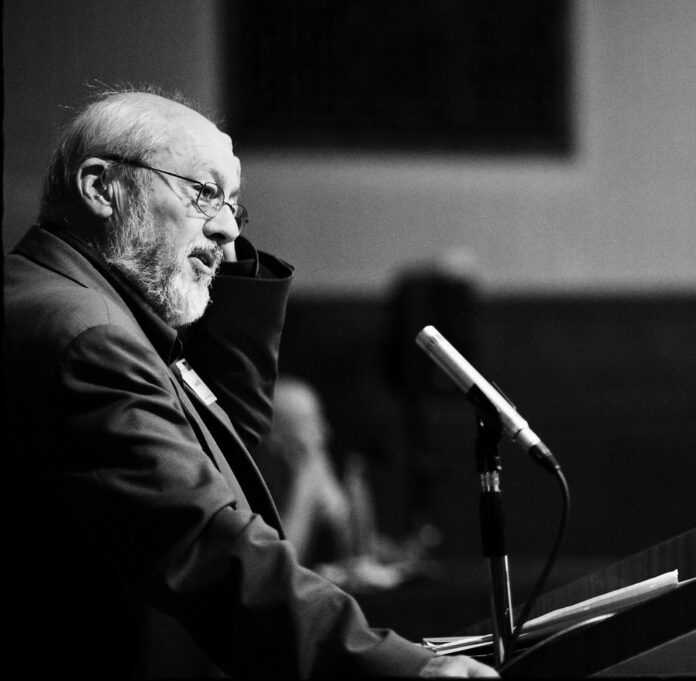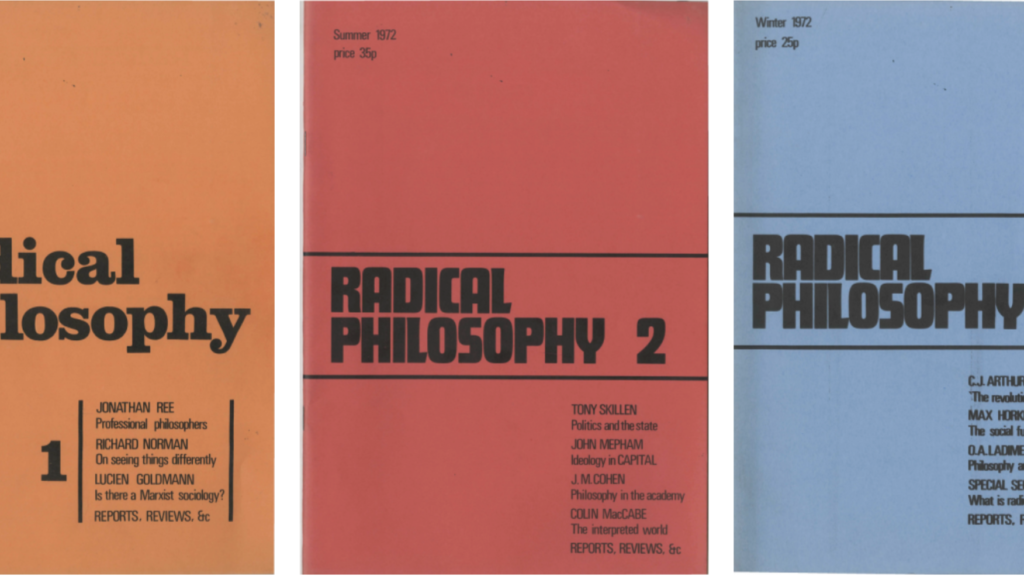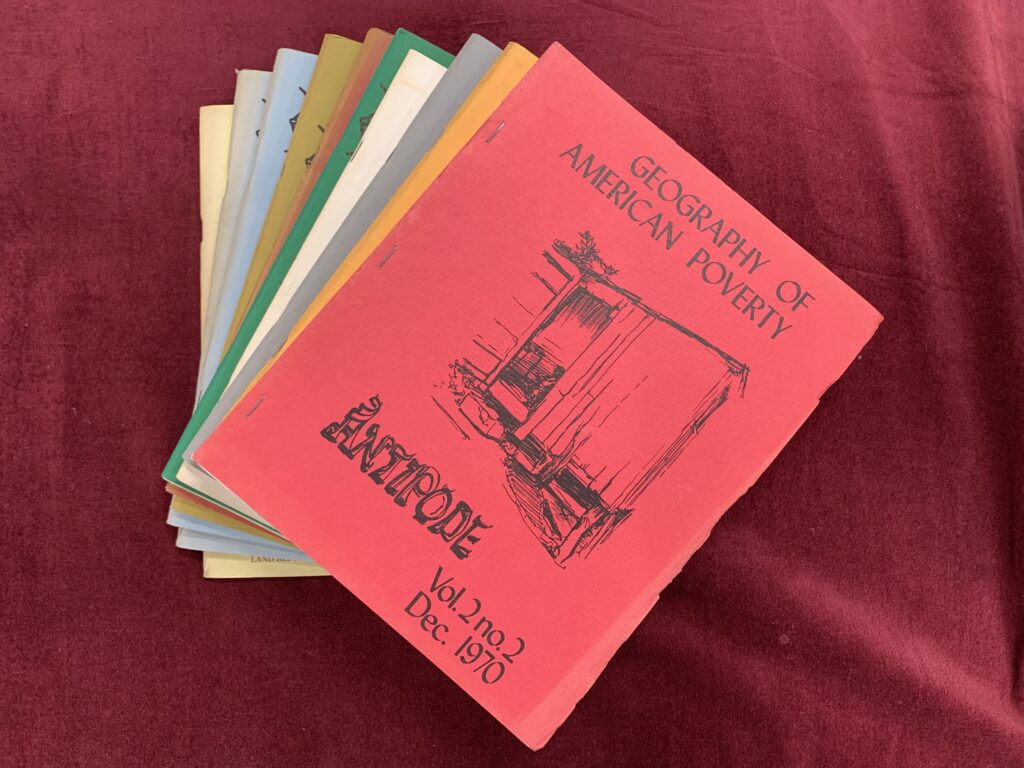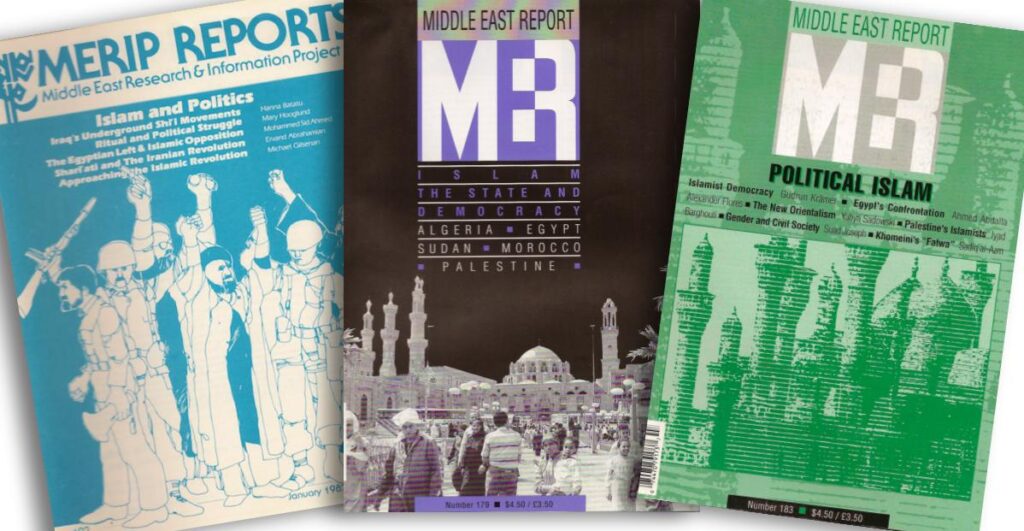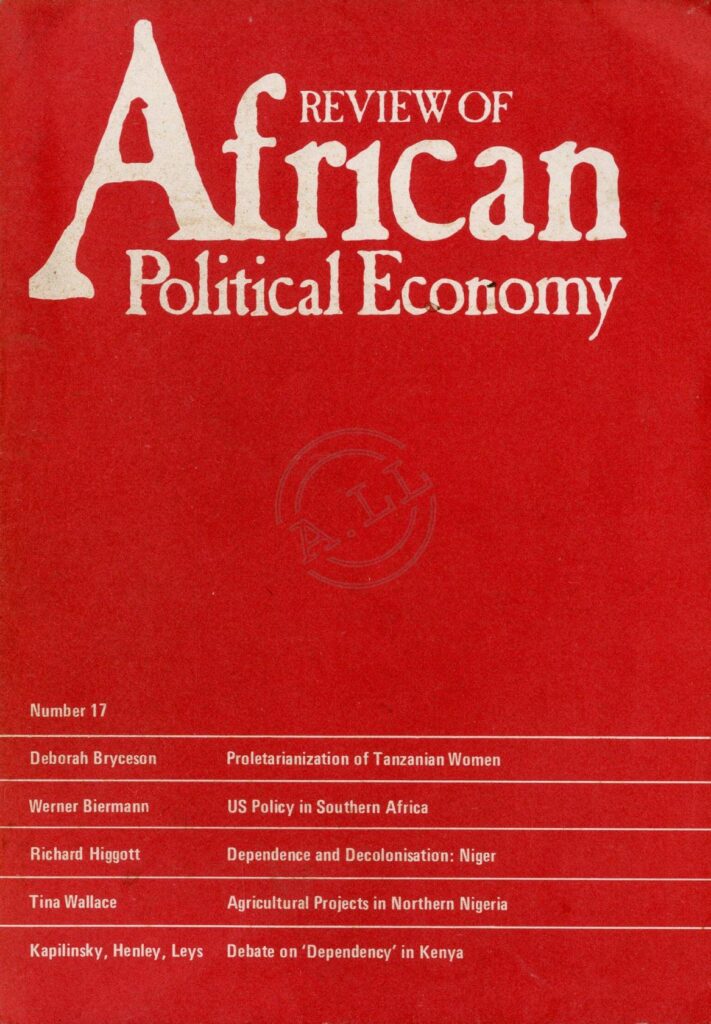This year marks ROAPE’s 50th anniversary. To mark the year, Robin Cohen, one of our founding editors, discusses the period in which ROAPE was born. At the time many similar journals were established and declared themselves as ‘radical’ and ‘alternative’. Like ROAPE, these new publications explicitly challenged the mainstream in their disciplines, and proposed changes to scholarship and the world.
By Robin Cohen
It is only appropriate to celebrate the 50th anniversary of the Review of African Political Economy, given that the journal has made such an important contribution to radical scholarship on Africa. The journal has a distinctive character and coverage, but I want to situate it in a suite of comparable journals that surfaced at nearly the same time, arguing that they had a great deal in common. The journals I have in mind, with their founding dates in brackets, are:
NACLA Report on the Americas (1967)
Antipode (1969)
Review of Radical Political Economics (1969)
Journal of Contemporary Asia (1970)
Merip Reports (1971)
Radical Philosophy (1972)
Critique of Anthropology (1974)
Latin American Perspectives (1974)
Review of African Political Economy (1974)
Signs: Journal of Women in Culture and Society (1975) and
History Workshop Journal (1976)
The overwhelming characteristic of these journals is that they were, and thought of themselves as, ‘radical’ and ‘alternative’. The word radical appears in the titles of the Review of Radical Political Economics and Radical Philosophy, but the core idea that they were set up to oppose is evident in the opening editorial statements of all of the listed journals. The Journal of Contemporary Asia, for example, sought to provide ‘an alternative to mainstream perspectives on contemporary Asian issues’, while prospective authors to Antipode were invited to ‘push at the boundaries of radical geographical thinking’ and ‘encouraged to critique and challenge settled orthodoxies’. For Radical Philosophy: ‘contemporary British philosophy [was] at a dead end. Its academic practitioners have all but abandoned the attempt to understand the world, let alone to change it’.
It is important to emphasize that while radicalism was frequently invoked it was not associated with any particular political party or tendency. In the first editorial statement of Critique of Anthropology, the editors declared that: ‘Particular attention will be paid to current developments in historical materialism throughout the world’. However, this nod to Marxism disappeared in later editorial statements which alluded to the journal ‘challenging received wisdoms inside academic anthropology and in society at large, presenting work that is innovative, challenging, sometimes experimental and often uncomfortable’. All the journals can broadly be classified as progressive in that most of the editors aligned themselves to anti-colonial, anti-imperial, anti-apartheid, anti-racist and feminist causes.
The journals had other features in common. They were founded by young scholars who were markedly undeferential towards older, more established academics. Until this wave of radical journals appeared, it was common for scholars to move slowly up the greasy pole of recognition and acceptance. After an approved set of publications, service in a professional association, recognition on the conference circuit and a recommendation from a ‘name’ in the field, one might be invited to become a more junior editor of one of the long-established and highly regarded journals. These journals were often associated with a subscription to a professional body. The editors of the radical journals totally subverted this tradition. The whole point was to develop a critique of existing scholars and scholarship. The word ‘critique’ indeed rivalled the term ‘radical’ in the frequency of its use.
The existing professional associations were ignored as were the existing publishers. Instead, nearly all the journals were initially self-produced and self-published. Technical progress made this a little easier in that electric typewriters with augmented features (like line justifying) allowed a more professional finish, though we were still a long way off full word-processing, on-screen editing, and the easy selection of alternative typefaces.
As I recall, the first issue of Critique of Anthropology deployed an old-fashioned Remington Typewriter font and was clumsily stapled together. This did not matter in the slightest, as the amateur appearance lent some authenticity to the product – seriousness of purpose was far more important than a slick appearance. Citation indices and rankings were of no concern and barely existed. Instead of professional recognition, editors carried multiple copies of a favoured journal to seminars, workshops, conferences or to common rooms, where hand sales led to conversations and new readers.
The radical journals not only published material opposed to conventional scholarship, they also were devoted to countering the conventional narratives perpetuated by the media, which had poor coverage of the Global South and were frequently infected by old Cold War rhetoric combined with racist, corporatist, misogynistic and imperialist precognitions. Correcting the corporate media was at the heart of the Middle East Research and Information Project, publisher of Merip Reports, which defined its mission as ‘to document and support popular struggles for peace and social justice in the Middle East, and to promote progressive change in U.S. policy toward the region’. Likewise, the North America Congress on Latin America’s NACLA Report on the Americas described itself as ‘a quarterly magazine of news and analysis [and] the oldest and most widely read progressive magazine covering Latin America and its relationship with the United States’. Even where the bulk of a journal comprised academic articles, there was often a space reserved for corrective reportage and short think pieces, as in the ‘Briefings’ section of the Review of African Political Economy.
It is also possible to see some similarities in the sociological profile of the editors of the various journals. I have already indicated that they were young and of a somewhat rebellious disposition. Most of the editors of the regional journals had worked in Africa, Asia, the Middle East, or Latin America, or had been part of volunteer programmes abroad (like Voluntary Service Overseas or the Peace Corps). They had also been influenced by the youth culture of the time – dressing informally, smoking the odd joint and trying (if not always succeeding) to be anti-sexist and anti-racist.
Naturally, the journals were edited collectively, sometimes with elaborate rotating arrangements to avoid any possibility of an iniquitous hierarchy congealing. All the listed journals were based in the US or UK and the membership of the editorial working groups reflected this. (I have not considered journals in France and Germany here.) Editors from the Global South were much valued despite being scarce on the ground in the first years. Most journals had to manage by appointing associated editors based in the regions they covered. Contributions from the Global South were also encouraged, and the journals often provided a platform for emerging scholars.
All the nominated journals covered women’s issues more thoroughly than the older publications and most of the journals had strong representation of women in their editorial collectives. Passionate debates among feminists about whether to find a place alongside other progressive movements or to define a separate arena for the airing of feminist analyses never found complete resolution, though several new journals focusing exclusively on feminist analyses were founded in the period covered. Probably the most prominent was Signs: Journal of Women in Culture and Society. Unlike the other radical journals, Signs found a prestigious publisher, the University of Chicago Press, from the start. Its aims were, according to an opening editorial, to ‘publish the new scholarship about women … exhibit[ing] … a ‘charged, restless consciousness’ that questioned ‘the social, political, economic, cultural, and psychological arrangements that have … defined femininity and masculinity’. Over the years, editorship of the journal was done in singles, pairs, and collectives. Given that the journal was based at the University of Chicago Press, perhaps Signs should not qualify as a radical journal – in which case, Feminist Review (founded in 1979, just outside our period) would make a worthy substitute. It’s first editorial adopted a decidedly more militant turn: ‘We must [learn to] widen our circle of influence, to turn gut reaction into a programme for change. We start from the position that theory and political analysis, which will necessarily draw on a variety of sources, are crucial to the struggle for women’s liberation’.
In addition to the attention to women’s issues another common theme was ‘political economy’, which appears in two of the titles and underlay much of the thinking across the whole collection of journals. The expression was used, of course, by Adam Smith as well as Marx and had been retained by the economics departments in a few established universities, including Glasgow and Toronto until the 1970s, when more conventional labels were adopted. The alternative and progressive meaning of ‘political economy’ was succinctly defined by John Weeks in the opening article of the first issue of the Review of Radical Political Economics (1969) when he wrote:
The overriding reality of the American economy is in inequality of income, inequality of power, in equality with regard to the ability to determine one’s life. Inequality is what economics should be all about. But, in fact, economics as it is taught and practiced by economists deals very little with inequality. The failure of marginal analysis is that it is used by those who … seek to justify things as they are. It is the politics of economists, not the techniques of economists, that makes this so.
In effect, political economy became the ethical and intellectual meeting point between the three core social science disciplines of economics, politics and sociology.
Because the radical journals were founded by editors who were driven by a strong sense of social justice, crafting a new intellectual space was also accompanied by reaching out to a wider readership though conferences, pamphleteering and workshops. In this respect, the History Workshop Journal was the uncontested leader of the pack. History Workshops stressing history from below, women’s history and social history indeed preceded the foundation of the journal. With a solid base at the trade union college in Oxford, Ruskin, the workshops started in 1967, when 50 people attended. By the mid-1970s, up to 1000 delegates were crammed into the college to hear such luminaries at Anna Davin, Ralph Samuels, Edward (E.P.) Thompson, Christopher Hill, Dorothy Thompson, and Eric Hobsbawm. The History Workshop model spread to France, the US, and South Africa, where a particularly vigorous offshoot took root.
Critique and renewal
Readers will not be surprised that, in harmony with the founding principles of the journals concerned, I think it is important not only to a sing their praises, but also think of their failures and limitations. Most of the journals concerned relied on unpaid or lowly-paid labour of members of the editorial collectives and/or their partners. When that goodwill was exhausted, they were easy prey for the established publishers who were often looking for more lively journals to spice up their mundane offerings.
In fairness to Taylor and Francis and Sage, who took over a considerable number of the radical journals, so far as I am aware, they did not seek directly to dilute editorial policies. This happened more slowly and subtly. The peer review process, the rankings of journals and citation scores conspired to make the articles more and more homogeneous and professionally acceptable. Arguably, most articles lost their ‘bite’. Many of the authors were themselves complicit in generating conformity to conventional academic norms as they were under pressure to publish in recognized and high-ranking journals. Editors, under similar pressures and additional constraints derived from increasing work loads, bowed to the inevitable and streamlined editorial processes.
Buoyed by hard-working and charismatic figures, extra-journal activities like the History Workshops, conference and seminars flourished. When these figures died or retired it was difficult to keep up the momentum. At the more theoretical level, perhaps the ‘radical’ moment had now passed. The radical journals, with some exceptions, took too long to grasp the salience of the environmental crisis and other pressing issues. One counterexample is Antipode, where an updated prospectus suggested that many of the articles published in the journal ‘are inspired by Marxist, socialist, anarchist, anti-racist, anti-colonial, feminist, queer, trans*, green, and postcolonial thought’. Other radical journals have not fully risen to the challenges of a multi-polar world, the revival of crude nationalism and populism, the politics of international mobility, identity politics, global pandemics, the environmental crisis, seemingly never-ending regional wars, digital capitalism, the challenges of AI, and many other issues that need urgent attention by critical scholars.
The good news is that with digital connectivity there are many opportunities to relaunch an alternative and progressive stream of ideas. This could take the form of parallel initiatives like roape.net or wholly independent, open access, digital platforms. If the questing spirit that marked the birth of the radical journal movement can be reinvigorated, there is a prospect of truly engaging authors and readers from all over the world, reworking the original vision of progressive change by addressing new problems, and finding new opportunities for transnational co-operation.


